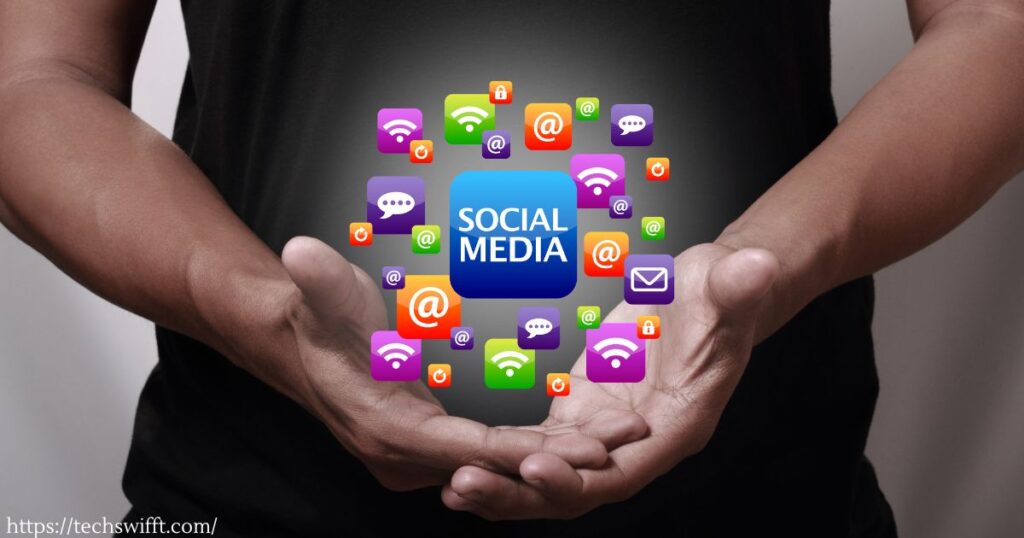Social Media PR refers to the use of social media platforms for public relations purposes. It involves creating and sharing content to engage with an audience and build relationships. Organizations use Social Media PR to enhance their brand image, reputation, and visibility online.
In today’s digital age, Social Media PR has become a game-changer. With billions of active users on platforms like Facebook, Twitter, and Instagram, businesses now have a direct line to connect with their target audience. Crafting captivating hooks that spark interest and engagement is the key to unlocking the power of Social Media PR.
Social Media’s Role in Media Relations
Social media has transformed media relations in a big way. Platforms like Twitter have become essential tools for journalists and bloggers.
Companies can now easily share press releases and updates directly with media professionals. Building relationships with influential journalists is more accessible through social media interactions.
Monitoring social media conversations allows companies to identify potential stories and media opportunities. Responding swiftly to media inquiries on social channels is crucial.
Sharing multimedia content like images and videos enhances media pitches. Analytics provide valuable insights into the reach and engagement of media relations efforts. Overall, social media has made media relations more interactive and
10 Steps for Building a Social Media PR Strategy
- Define your goals – whether it’s raising brand awareness, driving website traffic, or improving customer engagement.
- Research your target audience and identify which social platforms they frequent most.
- Conduct a social media audit to evaluate your current presence and performance.
- Develop compelling content tailored to each platform’s unique features and audience preferences.
- Create an editorial calendar to plan and schedule your social media content consistently.
- Implement tools and processes for monitoring brand mentions, conversations, and industry trends.
- Encourage employee advocacy by empowering your team to share company updates and amplify your messaging.
- Engage with influencers and thought leaders to expand your reach and credibility.
- Analyze performance metrics regularly and optimize your strategy based on data-driven insights.
- Stay agile and adapt your approach as new social media trends and best practices emerge.
Reach a wider audience
Social media platforms provide an unprecedented opportunity to reach a global audience transcending geographical boundaries. With billions of active users worldwide, even niche communities can be targeted effectively.
Strategic use of hashtags, influencer collaborations, and paid promotions amplify content visibility. Diverse formats like videos, live streams, and interactive content engage audiences uniquely.
Real-time sharing and cross-promotion across multiple channels maximize outreach. Ultimately, social media enables brands to expand their sphere of influence exponentially.
Track a campaign’s success
Comprehensive analytics tools integrated into social media channels offer invaluable insights into campaign performance. Metrics like impressions, reach, engagement rate, and click-throughs quantify audience interactions.
Tracking hashtag usage reveals content virality and resonance. Demographic data pinpoints the profile of audiences receptive to messaging.
Competitor analysis benchmarks strengths and weaknesses objectively. Ultimately, data-driven decision-making optimizes strategy and resource allocation for maximum impact.
Monitor for potential crises or issues
Social listening tools empower brands to proactively monitor online conversations and sentiments about their products, services, or reputation.
Identifying potential issues early enables swift response and mitigation before they escalate into full-blown crises.
Setting up alerts for brand mentions, industry keywords, and competitor activity keeps a pulse on relevant discussions. Consistently addressing customer concerns and negative feedback fosters trust and loyalty.
Review Other Blog Posts
Researching existing blog content within one’s industry provides valuable context and perspective. Understanding frequently discussed topics, popular formats, and successful engagement strategies informs content planning.
Analyzing high-performing posts reveals insights into audience preferences, effective headlines, and promotional tactics.
Additionally, identifying content gaps presents opportunities to fill with fresh, unique perspectives. Ultimately, reviewing other relevant blogs elevates one’s content quality.
Challenging Senior Living Misconceptions Through Media Relations
Widespread misconceptions about senior living communities persist, hindering families from exploring suitable options.
Through strategic media relations, providers can proactively address these biases. Earned media placements in reputable publications to reach wider audiences with factual narratives.
Facilitating facility tours for journalists enables first-hand experience debunking myths. Amplifying positive resident testimonials across channels combats negative stereotypes.
Consistent, transparent communication builds trusted relationships with media professionals and prospective residents.
Stronger Together: Why Crisis Communication and Proactive PR Have a Mutualistic Relationship
Effective crisis management and proactive public relations efforts are inextricably linked in cultivating a positive brand reputation.
Consistent brand messaging and audience engagement build reservoirs of goodwill to draw upon during crises.
Conversely, adept crisis communication mitigates reputational damage, safeguarding long-term PR objectives.
Integrating crisis protocols into overarching PR strategies ensures seamless, cohesive responses. Ultimately, this symbiotic relationship strengthens organizational resilience and stakeholder trust.
Why is Social Media Important for Public Relations?
Social media has become an indispensable tool for public relations professionals to directly engage with target audiences.
Platforms provide real-time channels for disseminating news, product updates, and organizational messaging.
Monitoring online conversations enables addressing concerns promptly and leveraging sentiment insights.
Building relationships with influencers and media amplifies brand exposure exponentially.
Additionally, social media facilitates two-way dialogue, fostering stronger connections with stakeholders.
How Social Media Impacts PR
The advent of social media has profoundly transformed the public relations landscape. News cycles accelerated, demanding rapid response times from communications teams.
Content shareability and influencer advocacy became pivotal for amplifying messaging. Reputation management extended beyond traditional media into online conversations.
Social listening emerged as a necessity for monitoring brand sentiment. Ultimately, social media afforded brands unprecedented opportunities for real-time engagement while posing new challenges.
7 Ways to Effectively Leverage Social Media PR
- Define clear goals aligning with broader marketing and communications objectives.
- Identify target audiences across various platforms and create tailored content strategies.
- Establish a consistent brand voice and visual identity across all social channels.
- Develop a robust content calendar integrating promotions, real-time trends, and engaging multimedia formats.
- Implement social listening protocols to monitor relevant conversations and respond promptly.
- Cultivate relationships with industry influencers through consistent engagement and collaboration.
- Leverage data-driven insights from analytics tools to optimize content performance iteratively.
FAQ’s
What is Social Media PR?
Social Media PR refers to the use of social media platforms and tools as part of public relations strategies to build brand awareness, engage with audiences, and manage reputation.
Why is Social Media PR important?
Social Media PR is crucial because it allows brands to directly connect with their target audiences, share news and updates in real time, and monitor online conversations about their brand or industry.
What are the main social media platforms used for PR?
The most commonly used social media platforms for PR include Facebook, Twitter, Instagram, LinkedIn, YouTube, and increasingly TikTok.
How can social media be used for media relations?
Social media can be used to share press releases, pitch story ideas, build relationships with journalists and influencers, and amplify media coverage.
What are some best practices for Social Media PR?
Best practices include defining clear goals, understanding your audience, creating a content strategy, engaging consistently, monitoring conversations, leveraging influencers, and measuring results.
How can brands measure the success of their Social Media PR efforts?
Success can be measured through metrics such as engagement rates, reach, website traffic, sentiment analysis, share of voice, and earned media value.
What are some common challenges faced in Social Media PR?
Challenges can include managing negative feedback or crises, maintaining a consistent brand voice, standing out in crowded social feeds, and keeping up with rapidly evolving platforms and trends.
How can brands effectively manage crises on social media?
Brands should have a crisis communication plan, respond swiftly and transparently, monitor conversations closely, address concerns directly, and involve leadership as needed.
What is the role of influencer marketing in Social Media PR
Influencer marketing involves partnering with relevant influencers to amplify brand messages, access new audiences, and build credibility through trusted endorsements.
How can Social Media PR be integrated with overall marketing and PR strategies?
Social Media PR should align with broader marketing and communications objectives, with consistent messaging and cross-promotion across all channels for maximum impact.
Final Thoughts
Social Media PR has undeniably transformed the way brands communicate and engage with their audiences. While it presents new challenges in terms of real-time response, content demands, and potential crises, it also unlocks unprecedented opportunities. Strategic use of social platforms allows companies to humanize their brand, build meaningful connections, amplify their messaging, and stay ahead of trends. As social media continues to evolve rapidly, an agile yet cohesive Social Media PR approach integrated with overall marketing efforts will be paramount for driving success. Ultimately, authenticity, consistency, and a customer-centric mindset should guide every brand’s social media journey.


![Update-on-Android-or-iOS-[2024]](https://techswifft.com/wp-content/uploads/2024/03/Update-on-Android-or-iOS-2024-150x150.jpg)
